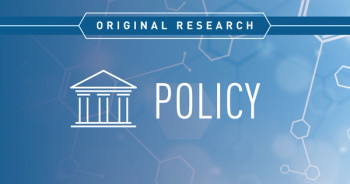
Supplements and Featured Publications
- Reducing the Risk of Cardiovascular Disease in Patients With Diabetes
- Volume 24
- Issue 13
Antihyperglycemic Medications for Cardiovascular Disease Risk Reduction
In recognition of the substantial prevalence of cardiovascular disease-related comorbidities among patients with diabetes and the potential for some agents to increase this risk, evaluation of cardiovascular outcomes is now a standard component of late-stage clinical trials involving antihyperglycemic agents. While most agents are evaluated in noninferiority trials to establish a lack of cardiovascular-related harm,
Am J Manag Care. 2018;24:-S0
a few agents have shown significant reductions in cardiovascular-related outcomes, including mortality.Over the past decade, cardiovascular outcomes trials (CVOTs) have become an integral part of all novel antihyperglycemic drugs developed, with studies seeking, at a minimum, to establish a lack of cardiovascular-related harm and a few even showing cardiovascular-related benefits.1 This educational activity will provide an overview of the agents that have shown cardiovascular-related benefits and recent clinical trial data supporting their efficacy in reducing cardiovascular comorbidities alongside improving glycemic goals in patients with type 2 diabetes (T2D).
Background
To effectively evaluate cardiovascular benefits while ensuring that sample size and duration of follow-up remain reasonable, CVOTs require the use of composite end points comprised of major adverse cardiovascular events (MACEs), as explained in item 4 of
Two primary classes of antihyperglycemic agents, sodium-glucose cotransporter 2 (SGLT2) inhibitors and glucagon-like peptide-1 receptor agonists (GLP-1 RAs), have been shown to have beneficial cardiovascular effects on patients with T2D.3 Pertinent information, including clinical trial data and mechanisms of action of cardiovascular disease (CVD) risk reduction, for agents that have shown benefit are reviewed in the following pages.
SGLT2 Inhibitors
Inhibitors of SGLT2 work by inhibiting glucose reabsorption in the kidneys, thereby increasing urinary excretion of glucose and reducing hyperglycemia independent of insulin.4 There are
4 FDA-approved agents for use in patients with T2D: canagliflozin, dapagliflozin, empagliflozin, and ertugliflozin; these agents may be prescribed as monotherapy or in combination with other antihyperglycemic agents.5
Mechanisms of CVD Risk Reduction in SGLT2 Inhibitors
Although the mechanisms by which SGLT2 inhibitors reduce the risk of cardiovascular events are not well understood, a few hypotheses have been outlined in the medical literature. In addition to the inhibitory effects on glucose reabsorption, downstream effects from SGLT2 inhibition include osmotic diuresis, natriuresis, lowering of body weight from calorie and fluid losses, lowering of uric acid, and lowering of blood pressure.6 One specific hypothesis suggests that SGLT2 inhibits the sodium-hydrogen exchanger, which has been shown in animal models to be highly effective at reducing myocardial injury.7 A second hypothesis speculates that SGLT2 inhibitors lead to a shift in myocardial and renal fuel metabolism away from fat and glucose oxidation to “an energy-efficient super fuel like ketone bodies,” which would account for improvements in myocardial and renal work efficiency and function.8,9 Third is the possible role of SGLT2 inhibitors on SGLT-induced toxic accumulations of sodium and calcium, which lead to cell death.7 Fourth and finally, glucagon is released by α cells in the pancreas following administration of SGLT2 inhibitors, which may be beneficial in heart failure (HF) through ionotropic effects.7 Both empagliflozin and canagliflozin have achieved superiority in reduction of 3P-MACE in recent clinical trials.10,11
EMPA-REG Trial
The EMPA-REG trial evaluated CVD morbidity and mortality in 7020 patients with T2D and at high risk for cardiovascular events who, in addition to the standard of care, were given
10 mg empagliflozin daily, 25 mg empagliflozin daily, or placebo.11 After a median observation time of 3.1 years, the primary outcome of a 3P-MACE occurred in 10.5% of patients (490/4687) in the pooled empagliflozin group compared with 12.1% of patients (282/2333) in the placebo group (hazard ratio [HR], 0.86; 95.02% CI, 0.74-0.99; P < .001 for noninferiority; P = .04 for superiority). With 3P-MACE incidence reductions of 43.9 and 37.4 per 1000 patient-years for placebo and empagliflozin groups, respectively, the number needed to treat for the primary outcome would be 160 patients. Although there were no differences between groups in the rates of MI or stroke, patients in the empagliflozin group showed significantly lower rates of death from cardiovascular causes (3.7% vs 5.9%, RRR 38%), hospitalizations for HF (2.7% vs 4.1%, RRR 35%), and death from any cause (5.7% vs 8.3%, RRR 32%).11 See the
CANVAS Trial
Similar to the EMPA-REG trial, the CANVAS and CANVAS-R trials evaluated cardiovascular outcomes among a total of 10,142 patients (pooled from 2 trials) with T2D at high risk for cardiovascular events.10 After a mean follow-up of 188.2 weeks, or approximately 3.7 years, the rate of the 3P-MACE primary outcome was significantly lower in patients receiving canagliflozin compared with placebo (HR, 0.86; 95% CI, 0.75-0.97; P < .001 for noninferiority, P = .02 for superiority) (see
Notable Ongoing CVOTs
Ertugliflozin is currently undergoing a phase 3 CVOT (NCT01986881) in approximately 8000 individuals with established vascular disease.16 The trial, referred to as the VERTIS CV study, began in late 2013 and has an expected primary completion date of September 2019. Enrolled patients will receive one of 15 mg ertugliflozin orally once daily, 5 mg ertugliflozin orally once daily, or placebo for up to 6.1 years; the primary outcome is time to first occurrence of 3P-MACE.16 Similarly, the DECLARE-TIMI (NCT01730534) is evaluating cardiovascular outcomes (ie, time to 3P-MACE and time to first event of cardiovascular death or hospitalization) in more than 17,276 participants, representing the largest CVOT to date, receiving either 10 mg dapagliflozin orally once daily or placebo for up to 6 years.17 The DECLARE-TIMI trial started in 2012 and had an estimated primary completion of July 2018.17
GLP-1 Receptor Agonists
In healthy individuals, GLP-1 is secreted after eating and augments insulin secretion while suppressing glucagon release, both of which lower glucose concentrations in the blood.18 In a similar mechanism, the GLP-1 RAs supplement this action in patients with T2D in a glucose-dependent manner.18,19 Additionally, GLP-1 RAs have been associated with reductions in body weight, lipid levels, and blood pressure.20 There are 2 primary types of GLP-1 RAs: short-acting and long-acting; short-acting agents (eg, exenatide and lixisenatide) work through inhibition of gastric emptying, while long-acting agents (eg, liraglutide, exenatide LAR, and semaglutide) work more strongly on fasting blood glucose through insulinotropic and glucagonostatic actions.18
Mechanisms of CVD Risk Reduction in GLP-1 RAs
Incretin-based therapy with the GLP-1 RAs offers cardioprotective effects through several mechanisms not mediated through improvements in hyperglycemia, weight loss, or blood pressure reduction.21 In studies of human umbilical vein endothelial cells, liraglutide showed antioxidative, anti-inflammatory, and antiapoptotic effects, in addition to reducing hyperglycemia-induced endoplasmic reticulum stress and attenuating endothelial cell dysfunction.21 Additional vasodilatory effects have been seen on the vascular system in both GLP-1 receptor-dependent and receptor-independent mechanisms, along with protections against ischemia-reperfusion injury.21 Lastly, GLP-1 RAs have also been noted as renoprotective via reductions of proteinuria and microalbuminuria.21 Two long-acting agents, liraglutide and semaglutide, have been shown in recent clinical trials to provide cardiovascular and/or mortality benefits in patients with T2D.3
LEADER Trial
The LEADER trial evaluated a primary outcome of 3P-MACE in 9340 patients with T2D who were also at high risk of cardiovascular events.22 After a median follow-up of 3.8 years, the primary outcome occurred in 13% of patients (608/4668) receiving liraglutide compared with 14.9% in the placebo group (HR, 0.87; 95% CI, 0.78-0.97; P < .001 for noninferiority, P = .01 for superiority).22 Death from cardiovascular-related causes was also lower in the liraglutide group compared with placebo (HR, 0.78; 95% CI, 0.66-0.93; P = .007), as was death from any cause (HR, 0.85; 95% CI, 0.74-0.97; P = .02) (see
In addition to CVD risk reduction, secondary outcome results from the LEADER trial have shown liraglutide offers renoprotective effects.24 The renal outcome was defined as a composite of new-onset persistent microalbuminuria, persistent doubling of the serum creatinine level, end-stage renal disease, or death due to renal disease.24 After the median follow-up of 3.8 years, the renal outcome occurred in significantly fewer patients given liraglutide than those given placebo (HR, 0.78; 95% CI, 0.67-0.92; P = .003), with similar rates of renal AEs between the groups.24
SUSTAIN-6 Trial
The SUSTAIN-6 trial evaluated the cardiovascular risk of 2 doses of once-weekly semaglutide (0.5 mg and 1.0 mg) compared with placebo in 3297 patients with T2D; 83% of trial participants had established CVD, chronic kidney disease, or both at baseline.25 After a median follow-up of 2.1 years, the primary outcome of 3P-MACE occurred in 6.6% of patients (108/1648) receiving semaglutide and 8.9% of patients (146/1649) receiving placebo (HR, 0.74; 95% CI, 0.58-0.95; P < .001 for noninferiority, P = .02 for superiority). Although deaths from cardiovascular causes were similar between groups, nonfatal stroke occurred in significantly fewer patients in the semaglutide group compared with placebo (HR, 0.61; 95% CI, 0.38-0.99; P = .04), as did new or worsening nephropathy (HR, 0.64; 95% CI, 0.46-0.88; P = .005) (see
Thiazolidinediones
Thiazolidinediones (TZDs) are the only antihyperglycemic agents to directly reduce insulin resistance, but their use is often limited by serious adverse events (SAEs), including weight gain, increased bone fracture risk in postmenopausal women and elderly men, and elevated risk for chronic edema or HF.20 Additionally, these agents have been associated with an increased risk of bladder cancer; however, other studies have found a statistically significant increase in risk lacking.20,26
A meta-analysis conducted by Lincoff et al in 2007 evaluated the cardiovascular outcomes in 16,390 patients receiving either pioglitazone or control therapy across 19 clinical trials ranging in duration from 4 months to 3.5 years.27 Researchers found the primary outcome of 3P-MACE occurred in 4.4% of patients (375/8554) taking pioglitazone and 5.7% of patients (450/7836) taking control therapy (HR, 0.82; 95% CI, 0.72-0.94, P = .005); however, pioglitazone was also associated with an increased risk of serious HF (HR, 1.41; 95% CI, 1.14-176; P = .002), albeit without an increased risk of mortality.27 Despite potential benefits to CVD risk reduction, AEs, such as HF, limit the use of pioglitazone in patients with T2D.20
Bromocriptine
In addition to TZDs, the quick-release (QR) formulation of bromocriptine, a dopamine-2 agonist, has demonstrated cardiovascular benefits in patients with T2D.28,29 In the Cycloset Safety Trial, cardiovascular outcomes were evaluated in 3095 patients with T2D randomized to receive bromocriptine or placebo; the study’s primary all-cause safety end point was the occurrence of any SAEs.28 The occurrence of CVD events was defined as a composite of MI, stroke, coronary revascularization, and hospitalization for angina or congestive heart failure.28 After 52 weeks, the bromocriptine-QR group demonstrated significantly fewer CVD end points compared with placebo (HR, 0.60; 95% 2-sided CI, 0.35-0.96), with similar SAEs between the groups (HR, 1.02; 95% 1-sided CI, 1.27).28 In the follow-up analysis evaluating CVD outcomes, researchers found a 55% CVD hazard risk reduction associated with bromocriptine-QR versus placebo (HR, 0.45; 95% CI, 0.23-0.88; P = .028).29 Among patients with poor glycemic control at baseline (defined as glycated hemoglobin [A1C] ≥ 7.5%), bromocriptine-QR demonstrated significantly improved efficacy compared with placebo in reduction of A1C (P < .001) and achievement of goal less than or equal to 7% (30% vs 3%, P = .003).29 Despite these benefits, along with an unlikelihood of causing hypoglycemia, the use of bromocriptine is often limited in practice due to it being less efficacious than other agents, such as metformin, and having an unfavorable GI AE profile.30
Comparison of Agents and 2018 Clinical Guidelines
While multiple CVOTs have successfully demonstrated noninferiority, the CVOTs reviewed in this activity focus primarily on SGLT2 inhibitors and GLP-1 RAs, as these agents have been shown to provide cardiovascular benefits, renal benefits, and acceptable safety profiles, as summarized in
The 2018 clinical practice guidelines published by the American Association of Clinical Endocrinologists and American College of Endocrinology provide a treatment algorithm for the progression of T2D based on entry A1C levels and symptoms to determine whether monotherapy, dual therapy, or triple therapy should be initiated.20 Both SGLT2 inhibitors and GLP-1 RAs are recommended in stages of monotherapy, dual therapy, and triple therapy; TZDs are recommended with caution.20 Specifically, if a patient has a history of atherosclerotic CVD, the guidelines recommend that initiation of dual therapy include empagliflozin or liraglutide.31
Although healthcare providers must bear in mind specific warnings and precautions that may discourage a particular agent’s use, the guidelines do not make any specific recommendations between SGLT2 inhibitors and GLP-1 RAs.20 To evaluate comparative efficacy between these agents and dipeptidyl-peptidase-4 (DPP-4) inhibitors against either placebo or no treatment, Zheng et al conducted a meta-analysis using mortality and cardiovascular end points.32 The meta-analysis covered 236 trials for a total of 176,310 patients, with a primary outcome of all-cause mortality and secondary outcomes that included CVD mortality, HF, MI, unstable angina, stroke, and safety end points (AEs and hypoglycemia).32 Researchers found that SGLT2 inhibitors (HR, 0.80; 95% CI, 0.71-0.89) and GLP-1 RAs (HR, 0.88; 95% CI, 0.81-0.94), but not DPP-4 inhibitors (HR, 1.02; 95% CI, 0.94-1.11), were associated with significantly reduced all-cause mortality in patients with T2D.32 Additionally, SGLT2 inhibitors were associated with significantly lower rates of cardiovascular mortality (HR, 0.79; 95% CI, 0.69-0.91), HF events (HR, 0.62; 95% CI, 0.54-0.72), and MI (HR, 0.86; 95% CI, 0.77-0.97); GLP-1 RAs were associated with lower rates of cardiovascular mortality (HR, 0.85; 95% CI, 0.77-0.94) but increased risk of AEs leading to study discontinuation (vs SGLT2 inhibitors, HR, 1.80; 95% CI, 1.44-2.25; vs DPP-4 inhibitors, HR 1.93; 95% CI, 1.59-2.35).32 These results indicate that either SGLT2 inhibitors or GLP-1 RAs would be effective at improving mortality outcomes among patients with T2D; however, SGLT2 inhibitors may yield fewer AEs and therefore be better tolerated by patients.
Ironically, despite the better tolerability compared with other agents, SGLT2 inhibitors have had several FDA warnings issued over the past 3 years, including increased risk of bone fracture and decreased bone mineral density (canagliflozin), ketoacidosis and serious urinary tract infections (all agents), increased risk of leg and foot amputations (canagliflozin), and acute kidney injury (canagliflozin and dapagliflozin).33
Conclusions
Patients with T2D experience significant burdens to morbidity and mortality, with cardiovascular complications representing a substantial portion of this burden. Since 2008, the FDA has recommended that all novel antihyperglycemic agents undergo CVOTs to rule out any risk of contributing to cardiovascular events in these patients. While most agents undergoing CVOTs have achieved noninferiority, a few have shown superiority for cardiovascular events. These include the SGLT2 inhibitors empagliflozin and canagliflozin and the GLP-1 RAs liraglutide and semaglutide. Both empagliflozin and liraglutide have received an FDA-approved indication for reduction of cardiovascular events in patients with established CVD. Although these benefits exist, healthcare providers must individualize therapy for each patient, as many antihyperglycemic agents have black box warnings or tolerability issues. In addition to trials showing cardiovascular benefit (ie, SUSTAIN-6, LEADER, CANVAS, and EMPA-REG), several CVOTs are currently ongoing (eg, PIONEER, CREDENCE, DECLARE-TIMI, SCORED, VERTIS CV, CAROLINA, and CARMELINA) and results are expected in the next 1 to 2 years. It is important for healthcare providers to understand that many trials focus on showing a lack of harm rather than proving a benefit. Agents that have achieved noninferiority in CVOTs are recommended by clinical guidelines alongside beneficial agents and, oftentimes, other factors, such as risks for certain AEs, will dictate therapy selection. Healthcare providers must stay abreast of the potential benefits that these agents offer patients with T2D who are at high risk of cardiovascular events in order to optimize outcomes and reduce mortalityAuthor affiliation: Professor of Pharmacy Practice, School of Pharmacy—Boston MCPHS University, Boston, MA.
Funding source: This activity is supported by an educational grant from Boehringer Ingelheim Pharmaceuticals, Inc. and Lilly USA, LLC.
Author disclosure: Dr Goldman is a consultant for Becton Dickinson and serves on the speakers bureaus for Novo Nordisk and Sanofi.
Authorship information: Concept and design, acquisition of data, analysis and interpretation of data, drafting of the manuscript, and critical revision of the manuscript for important intellectual content.
Address correspondence to: jennifer.goldman@mcphs.edu.
Medical writing and editorial support provided by: Rachel L. Brown, PharmD, MPH.1. Regier EE, Venkat MV, Close KL. More than 7 years of hindsight: revisiting the FDA’s 2008 guidance on cardiovascular outcomes trials for type 2 diabetes medications. Clin Diabetes. 2016;34(4):173-180. doi: 10.2337/cd16-0005.
2. Marx N, McGuire DK, Perkovic V, et al. Composite primary end points in cardiovascular outcomes trials involving type 2 diabetes patients: should unstable angina be included in the primary end point? Diabetes Care. 2017;40(9):1144-1151. doi: 10.2337/dc17-0068.
3. Singh AK, Singh R. Recent cardiovascular outcome trials of antidiabetic drugs: a comparative analysis. Indian J Endocrinol Metab. 2017;21(1):4-10. doi: 10.4103/2230-8210.196026.
4. Gallo LA, Wright EM, Vallon V. Probing SGLT2 as a therapeutic target for diabetes: basic physiology and consequences. Diabetes Vasc Dis Res. 2015;12(2):78-89. doi: 10.1177/1479164114561992.
5. American Diabetes Association. Pharmacologic approaches to glycemic treatment: standards of medical care in diabetes—2018. Diabetes Care. 2018;41(suppl 1):S73-S85. doi: 10.2337/dc18-S008.
6. Neeland I, de Albuquerque Rocha N, McGuire D. Cardiovascular effects of sodium glucose cotransporter 2 inhibitors: the search for the how and why—American College of Cardiology. American College of Cardiology website. acc.org/latest-in-cardiology/articles/2016/06/29/13/48/cardiovascular-effects-of-sodium-glucose-cotransporter-2-inhibitors. Published 2016. Accessed May 11, 2018.
7. Bell RM, Yellon DM. SGLT2 inhibitors: hypotheses on the mechanism of cardiovascular protection. Lancet Diabetes Endocrinol. 2017;6(6):435-437. doi: 10.1016/S2213-8587(17)30314-5.
8. Mudaliar S, Alloju S, Henry RR. Can a shift in fuel energetics explain the beneficial cardiorenal outcomes in the EMPA-REG OUTCOME Study? A unifying hypothesis. Diabetes Care. 2016;39(7):1115-1122. doi: 10.2337/dc16-0542.
9. Ferrannini E. Sodium-glucose co-transporters and their inhibition: clinical physiology. Cell Metab. 2017;26(1):27-38. doi: 10.1016/j.cmet.2017.04.011.
10. Neal B, Perkovic V, Mahaffey KW, et al. Canagliflozin and cardiovascular and renal events in type 2 diabetes. N Engl J Med. 2017;377(7):644-657. doi: 10.1056/NEJMoa1611925.
11. Zinman B, Wanner C, Lachin JM, et al. Empagliflozin, cardiovascular outcomes, and mortality in type 2 diabetes. N Engl J Med. 2015;373(22):2117-2128. doi: 10.1056/NEJMoa1504720.
12. Hirshberg B, Raz I. Impact of the U.S. Food and Drug Administration cardiovascular assessment requirements on the development of novel antidiabetes drugs. Diabetes Care. 2011;34(suppl 2):S101-S106. doi: 10.2337/dc11-s202.
13. Jardiance [prescribing information]. Ridgefield, CT: Boehringer Ingelheim Pharmaceuticals, Inc; 2017. www.accessdata.fda.gov/drugsatfda_docs/label/2017/204629s016lbl.pdf. Accessed May 11, 2018.
14. US Food and Drug Administration. FDA Drug Safety Communication: FDA confirms increased risk of leg and foot amputations with the diabetes medicine canagliflozin (Invokana, Invokamet, Invokamet XR). FDA website. www.fda.gov/Drugs/DrugSafety/ucm557507.htm. Published May 6, 2017. Updated July 25, 2017. Accessed May 11, 2018.
15. Helfand C. ACC: waiting on the FDA’s heart-helping verdict, J&J shares more positive CV data for Invokana. FiercePharma website. www.fiercepharma.com/pharma/acc-awaiting-fda-verdict-j-j-touts-more-positive-cv-data-for-invokana. Published March 11, 2018. Accessed May 11, 2018.
16. Cardiovascular Outcomes Following Ertugliflozin Treatment in Type 2 Diabetes Mellitus Participants With Vascular Disease, The VERTIS CV Study (MK-8835-004). clinicaltrials.gov/ct2/show/NCT01986881. Published November 19, 2013. Updated May 17, 2018. Accessed June 3, 2018.
17. Multicenter Trial to Evaluate the Effect of Dapagliflozin on the Incidence of Cardiovascular Events (DECLARE-TIMI58). clinicaltrials.gov/ct2/show/record/NCT01730534. Published November 21, 2012. Updated June 25, 2018. Accessed July 3, 2018.
18. Meier JJ. GLP-1 receptor agonists for individualized treatment of type 2 diabetes mellitus. Nat Rev Endocrinol. 2012;8(12):728-742. doi: 10.1038/nrendo.2012.140.
19. Zhao TC. Glucagon-like peptide-1 (GLP-1) and protective effects in cardiovascular disease: a new therapeutic approach for myocardial protection. Cardiovasc Diabetol. 2013;12(1):90. doi: 10.1186/1475-2840-12-90.
20. Garber AJ, Abrahamson MJ, Barzilay JI, et al. Consensus statement by the American Association
of Clinical Endocrinologists and American College of Endocrinology on the comprehensive type 2
diabetes managmenet algorithm—2018 executive summary. Endocr Pract. 2018;24(1):91-120. doi: 10.4158/CS-2017-0153.
21. Strain WD, Smith C. Cardiovascular outcome studies in diabetes: how do we make sense of these new data? Diabetes Ther. 2016;7(2):175-185. doi: 10.1007/s13300-016-0165-z.
22. Marso SP, Daniels GH, Brown-Frandsen K, et al. Liraglutide and cardiovascular outcomes in type 2 diabetes. N Engl J Med. 2016;375(4):311-322. doi: 10.1056/NEJMoa1603827.
23. Victoza [prescribing information]. Plainsboro, NJ: Novo Nordisk Inc; 2017. www.accessdata.fda.gov/drugsatfda_docs/label/2017/022341s027lbl.pdf. Accessed May 12, 2018.
24. Mann JFE, Ørsted DD, Brown-Frandsen K, et al. Liraglutide and renal outcomes in type 2 diabetes. N Engl J Med. 2017;377(9):839-848. doi: 10.1056/NEJMoa1616011.
25. Marso SP, Bain SC, Consoli A, et al. Semaglutide and cardiovascular outcomes in patients with type 2 diabetes. N Engl J Med. 2016;375(19):1834-1844. doi: 10.1056/NEJMoa1607141.
26. Actos [prescribing information]. Deerfield, IL: Takeda Pharmaceuticals America, Inc; 2017.
www.accessdata.fda.gov/drugsatfda_docs/label/2017/021073s049lbl.pdf. Accessed May 12, 2018.
27. Lincoff AM, Wolski K, Nicholls SJ, Nissen SE. Pioglitazone and risk of cardiovascular events in patients with type 2 diabetes mellitus. JAMA. 2007;298(10):1180-1188. doi: 10.1001/jama.298.10.1180.
28. Gaziano JM, Cincotta AH, O’Connor CM, et al. Randomized clinical trial of quick-release bromocriptine among patients with type 2 diabetes on overall safety and cardiovascular outcomes. Diabetes Care. 2010;33(7):1503-1508. doi: 10.2337/dc09-2009.
29. Chamarthi B, Ezrokhi M, Rutty D, Cincotta AH. Impact of bromocriptine-QR therapy on cardiovascular outcomes in type 2 diabetes mellitus subjects on metformin. Postgrad Med. 2016;128(8):761-769. doi: 10.1080/00325481.2016.1243003.
30. Stein SA, Lamos EM, Davis SN. A review of the efficacy and safety of oral antidiabetic drugs. Expert Opin Drug Saf. 2013;12(2):153-175. doi: 10.1517/14740338.2013.752813.
31. American Diabetes Association. Economic costs of diabetes in the U.S. in 2017. Diabetes Care. 2018;41(5):917-928. doi: 10.2337/dci18-0007.
32. Zheng SL, Roddick AJ, Aghar-Jaffar R, et al. Association between use of sodium-glucose cotransporter 2 inhibitors, glucagon-like peptide 1 agonists, and dipeptidyl peptidase 4 inhibitors with all-cause mortality in patients with type 2 diabetes. JAMA. 2018;319(15):1580-1591. doi: 10.1001/jama.2018.3024.
33. US Food and Drug Administration. Sodium-glucose cotransporter-2 (SGLT2) inhibitors. www.fda.gov/Drugs/DrugSafety/ucm446852.htm. Updated May 16, 2017. Accessed May 12, 2018.
Articles in this issue
over 7 years ago
Posttestover 7 years ago
Participating Facultyover 7 years ago
The Burden of Cardiovascular Disease in Patients with DiabetesNewsletter
Stay ahead of policy, cost, and value—subscribe to AJMC for expert insights at the intersection of clinical care and health economics.









































